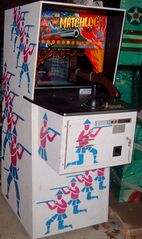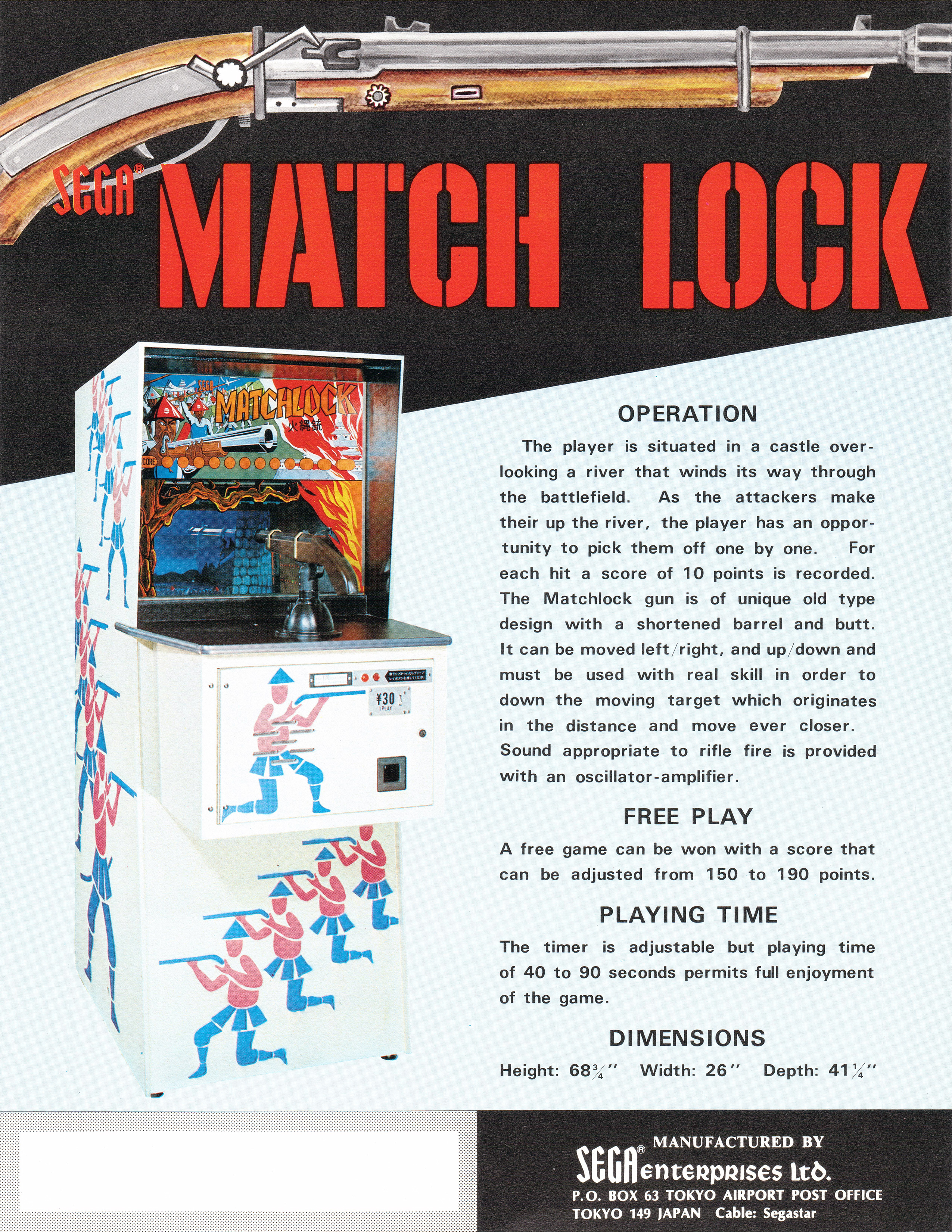Difference between revisions of "Matchlock"
From Sega Retro
m |
m |
||
| Line 7: | Line 7: | ||
| genre= | | genre= | ||
| releases={{releasesArcade | | releases={{releasesArcade | ||
| + | | em_date_jp=1972{{ref|https://web.archive.org/web/20230819003054/http://thetastates.com/eremeka/1970s.html}} | ||
| + | | em_rrp_jp=240,000{{fileref|1977SegaPriceList JP.pdf|page=6}} | ||
| em_date_us=1972{{ref|https://web.archive.org/web/20230819003054/http://thetastates.com/eremeka/1970s.html}} | | em_date_us=1972{{ref|https://web.archive.org/web/20230819003054/http://thetastates.com/eremeka/1970s.html}} | ||
}} | }} | ||
Revision as of 23:02, 25 August 2023

| |||||||||||||
| Matchlock | |||||||||||||
|---|---|---|---|---|---|---|---|---|---|---|---|---|---|
| System(s): Electro-mechanical arcade | |||||||||||||
| Publisher: Sega | |||||||||||||
| Developer: Sega | |||||||||||||
| Number of players: 1 | |||||||||||||
|
This short article is in need of work. You can help Sega Retro by adding to it.
Matchlock is an electro-mechanical arcade shooting gallery game developed and manufactured by Sega. Released exclusively in the United States in 1972, it is notable for its early use of solid-state digitized sound samples.
Contents
Specifications
Dimensions
Gameplay
On a feudal Japanese battlefield, players are tasked with shooting oncoming hordes of ashigaru (足軽) foot soldiers with a swivel-mounted replica of a tanegashima (種子島) matchlock rifle (the weapon is more commonly known as a hinawajū (火縄銃), the kanji for which appears on the cabinet itself.[3]) Enemies approach the player's Japanese castle (城) in diagonal rows, and upon being shot, dramatically emit a digitized scream in an accent associated with offensive Asian stereotypes of the time.
The replica matchlock rifle is notable for using built-in recoil to simulate firing an actual weapon.
Scoring
Each successful hit is worth 10 points, and a free game is awarded between 140 and 190 points.
Photo gallery
Promotional material
References
- ↑ 1977 Sega Price List, page 6
- ↑ 2.0 2.1 http://thetastates.com/eremeka/1970s.html (Wayback Machine: 2023-08-19 00:30)
- ↑ File:Matchlock machine2.jpg




